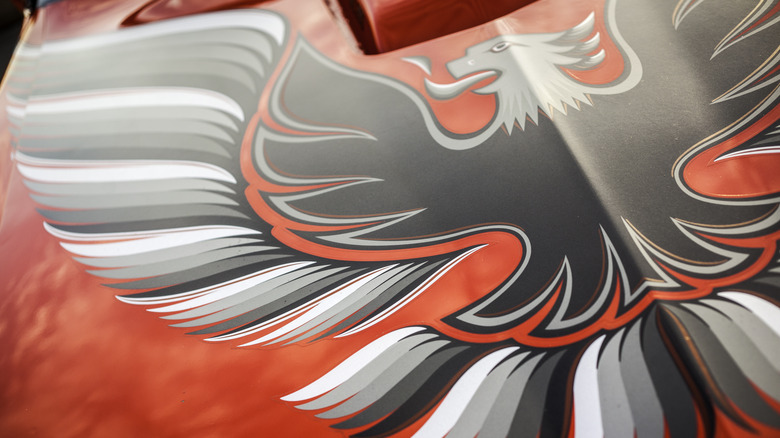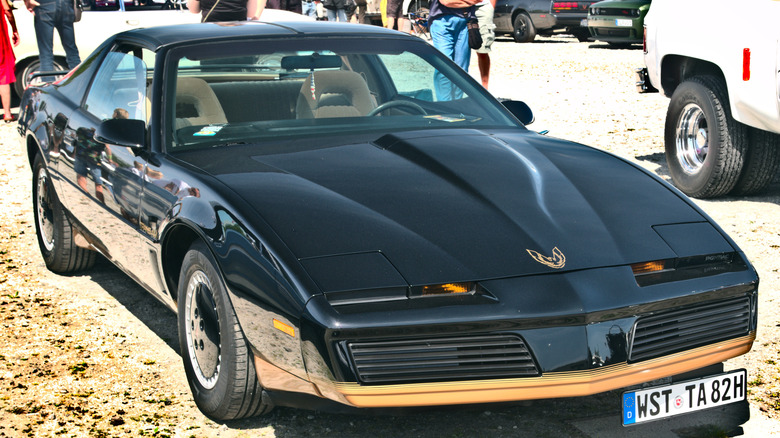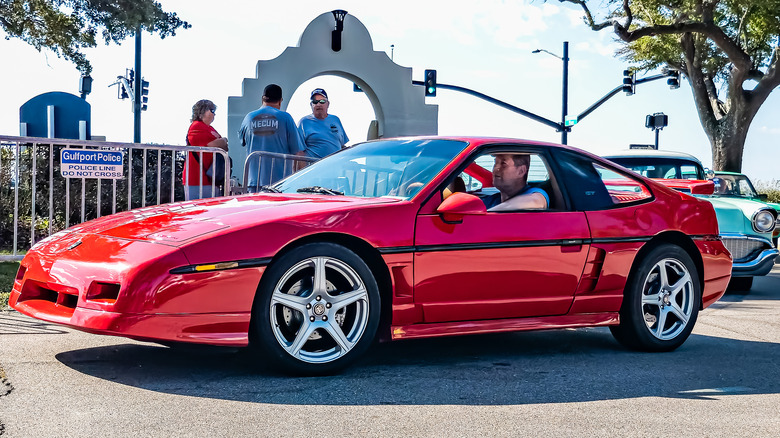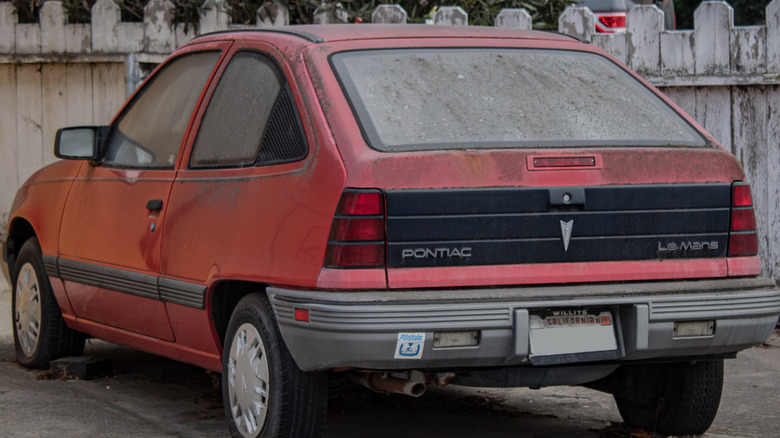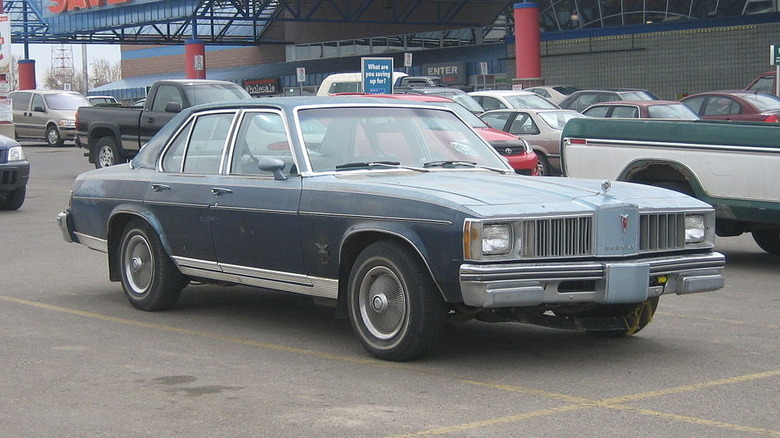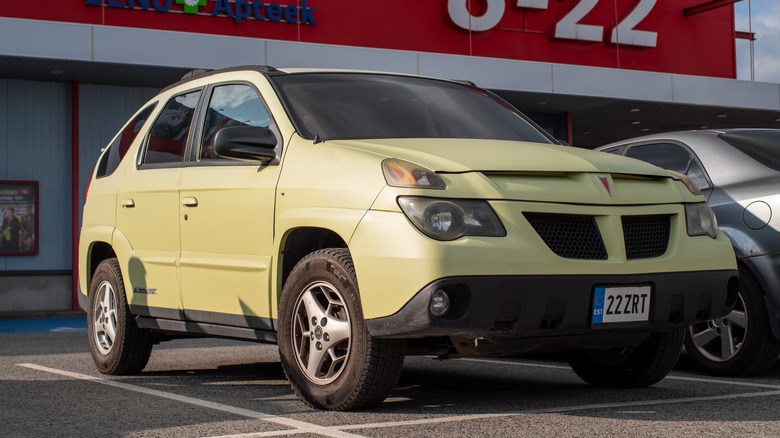5 Of The Most Hated Pontiac Models Ever Made
It has been almost 15 years since General Motors made the decision to shutdown Pontiac. In 2009 the company was facing a monumental bankruptcy and needed to make severe operational cuts across the board in order to shore up finances. Consequently the effort to salvage the company through restructuring came at the expense of one of the most legendary and innovative brands in American automotive history. Yet a quick glance at Pontiac's work in more recent decades shows that the brand's demise may have already been written on the wall well before GM had to slash its way through a financial catastrophe.
The combined impact of the strict emissions regulations enforced in the Clean Air Act and the OPEC oil crisis in the '70s marked the beginning of Pontiac's downward spiral. From that point onward the brand created a series of inadequate, unpopular, and poorly performing models that contributed to its eventual demise. Listed below are five of the most disliked models that Pontiac sold on the market.
1982 Firebird Trans Am
Widely known as Burt Reynolds' ride of choice in the 1977 movie "Smokey and the Bandit," the Pontiac Firebird Trans Am was a slick muscle car that radiated rebellion. Sadly, the 1982 Firebird failed to follow through in delivering an equal level of revolutionary performance. The pristine V8 engine that made this model rocket across open roads was totally gutted after the Clean Air Act passed into law. The next-best option available for the newly-launched third generation was an LU5 5.0-liter V8 engine that only clocked a max of 165 horsepower — a far cry from the roaring 5.3-liter, two-barrel carbureted V8 that made the 1967 Firebird Sprint soar.
A hollowed-out engine wasn't the only problem that put a hitch in the third generation's wings. Frequent issues stemming from a weak ignition module as well as a glitchy powertrain made this version of the Firebird particularly high maintenance.
[Featured image by Jacek Rużyczka via Wikimedia Commons | Cropped and scaled | CC BY SA 4.0]
1984 Fiero
Just a couple years after the release of the third-generation Firebird, the automobile brand then unveiled the Pontiac Fiero – a futuristic two-seater that had been in the works since 1963. From its inception the model had progressively morphed into a fusion of the mid-engine sports coupe that then-Pontiac president Bill Hoglund desired, mixed with the family-focused functionality prescribed by GM. The result was a plastic-clad Ferrari lookalike that was built upon a menagerie of used components taken from pre-existing GM models.
Sadly the Fiero literally had quite the fiery reputation. Roughly 1 out of every 400 units sold in 1984 would spontaneously combust due to the Fiero's subpar engine configuration. The fact that the Fiero's dipstick was mislabeled further fanned the flames, as it meant the engine was often not receiving adequate amounts of oil to properly run. Consequently, the frequent pyrotechnics along with other concerns would force Pontiac to back on the number of models sold from 136,840 units in 1984 to 76,371 units in 1985. Hefty costs and several attempts from Pontiac's management team would eventually improve the car's performance, but by then the damage was done and GM had the Fiero discontinued.
1987 LeMans
Not to be confused with the highly acclaimed 1963 American-made muscle car, the sixth-generation 1970 Pontiac LeMans was completely different from its predecessors because it was built internationally. Launched in 1987, the model featured a German Opel Kadett E body placed on top of parts engineered by South Korean manufacturer Daewoo. U.S. customers had the option of purchasing this rebadged Pontiac LeMans as either a four-door sedan or a three-door hatchback.
Unfortunately the global allure of the LeMans quickly faded as American purchasers experienced its subpar performance and insipid motor that maxed out at 74 hp. People tended to shy away from buying the LeMans because of how rapidly the car deteriorated and required maintenance due to its flimsy, low-grade parts. After years of unchanging poor sales figures and the dissolution of the partnership between GM and Daewoo in 1992, the sixth-generation Pontiac LeMans was finally pulled off the market in 1993.
[Featured image by LukaCali via Wikimedia Commons | Cropped and scaled | CC BY SA 4.0 ]
1980 Phoenix
During the '80s a number of GM affiliated brands released front-wheel-drive models known as GM-X cars. For the Pontiac this was the second-generation Phoenix, which had been significantly downsized compared to the first generation from the '70s. Like the Fiero, a 2.5-liter "Iron Duke" engine was used to power the Phoenix and was only capable of reaching a top speed of 99 mph.
Right out of the gate the second generation experienced a broad variety of maintenance problems, which included corrosion from rust, a weak transmission, and loose interior clippings and bolts that would shear off. The most alarming issue arose with a large number of purchasers complaining about a severely compromised braking system in the Phoenix, which made it very hazardous to drive. This malfunction was so pervasive and widely publicized that eventually the National Highway Traffic Safety Administration (NHTSA) sued GM and demanded a total recall of the model, irreparably denting the reputation of the Phoenix and other X-cars in the eyes of the public.
[ Featured image by dave_7 via Wikimedia Commons | Cropped and scaled | CC BY SA 2.0 ]
2001 Aztek
If a model was ever to receive an Honorary Mention in the downfall of Pontiac, no other candidate would be more deserving of the title than the Aztek. Produced from 2001 until 2005, the Pontiac Aztek was a failure in a horrendously bizarre league of its own. Time ranked the crossover-SUV among the all-time 50 Worst Cars, brutally labelling it as "a bulky, plastic-clad mess." Throughout its run this model was bogged down by recalls due to quality control issues ranging from faulty airbags to a particularly flammable fuel delivery system. On top of that, a needlessly convoluted layout of the engine compartment made fixing these issues an extremely time consuming process. The design of the Aztek also lacked clarity since it was positioned as the go-to, outdoor sporting vehicle, but had the performance and components of a ramshackle minivan.
Another problem was that GM disregarded the lack of public demand for such a vehicle. Despite its consistently low scores in market tests and focus groups, GM plowed forward with releasing the Aztek because it checked off the internal, corporate objectives of possessing versatility and innovative potential. As a result this widely unpopular model sold only 21,000 units in its first year on the marked, and earned a place on SlashGear's list of 10 of the strangest cars of the 2000s. It wasn't until after the Aztek's prominent feature as Walter White's vehicle in the hit TV series "Breaking Bad" that the model experienced even a modest resurgence in popularity, particularly among young drivers.
